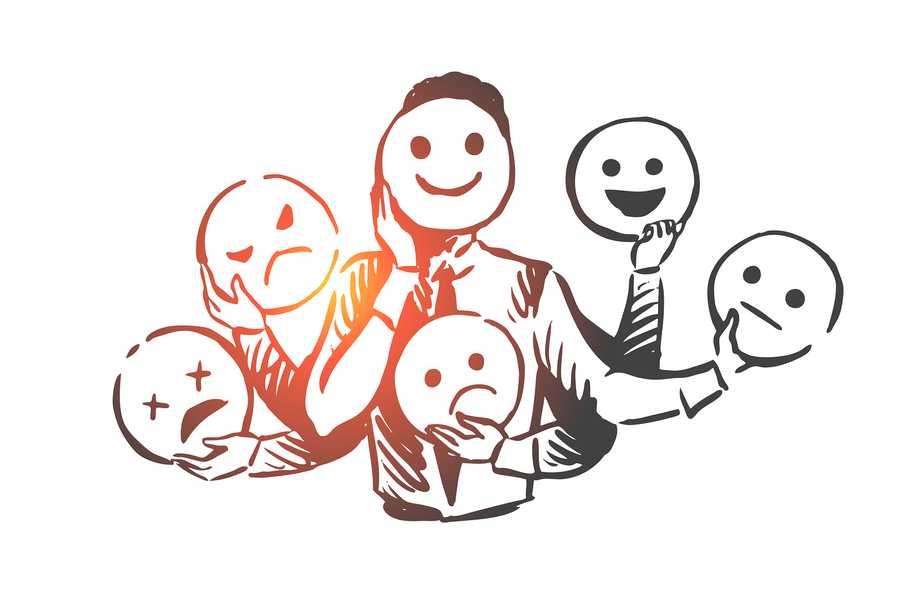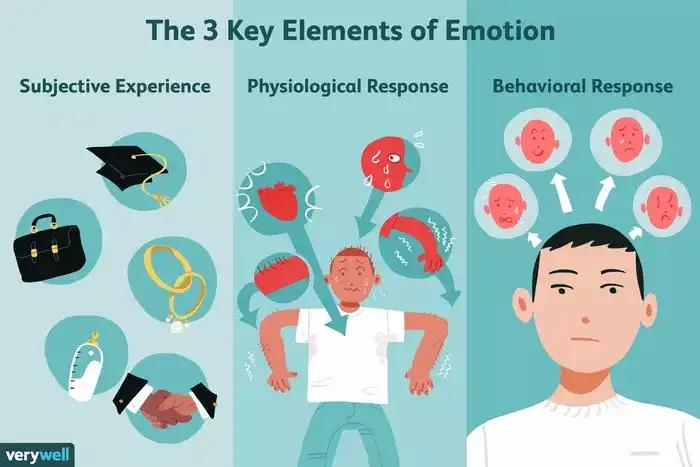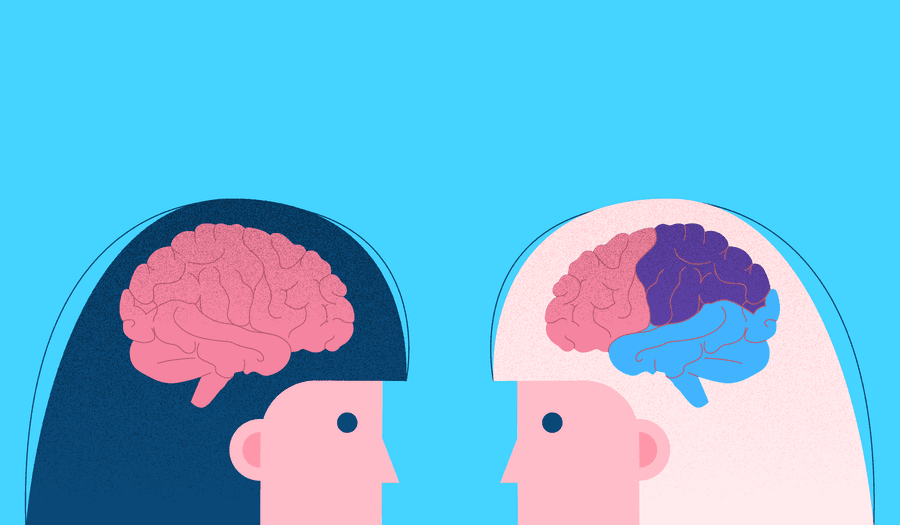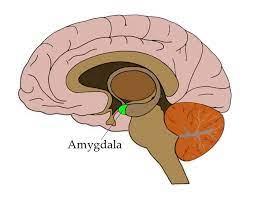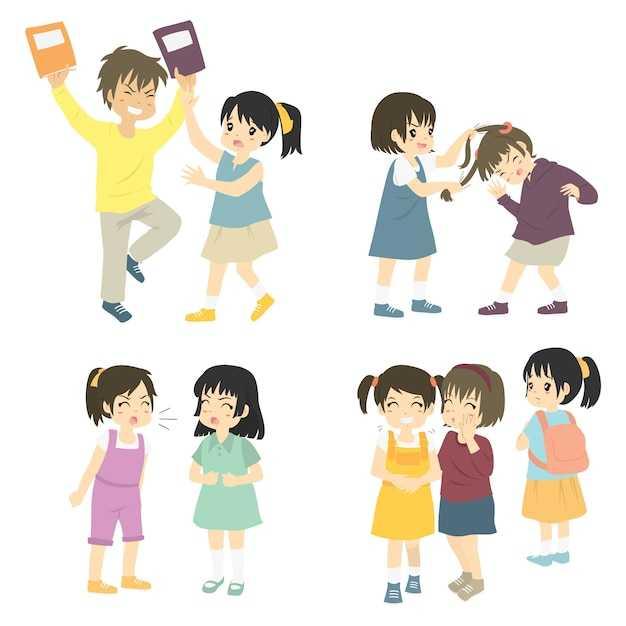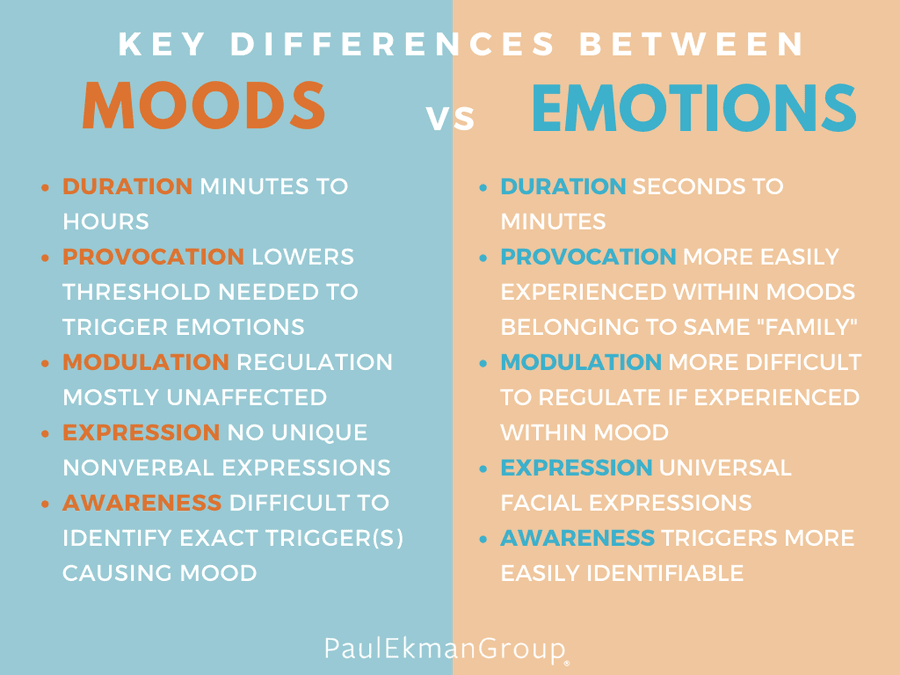Explore the World's Best Ideas
Join today and uncover 100+ curated journeys from 50+ topics. Unlock access to our mobile app with extensive features.
What are emotions?
An emotion is a complex pyschological state that involves three distinct components: a subjective experience, a physiological response, and a behavioral or expressive response.
In addition to trying to define what emotions are, researchers have also tried to identify and classify the different types of emotions. The descriptions and insights have changed over time
Plutchik proposed eight primary emotional dimensions: happiness vs. sadness, anger vs. fear, trust vs. disgust, and surprise vs. anticipation. These emotions can then be combined to create others (such as happiness + anticipation = excitement).
64
229 reads
Key elements of emotions
In order to better understand what emotions are. let's focus on their three key elements known as:
- The subjective experience
- The physiological response
- The behavioral response.
59
286 reads
The subjective experience
While experts believe that there are a number of basic universal emotions that are experienced by people all over the world regardless of background or culture, researchers also believe that experiencing emotion can be highly subjective
Consider anger, for example. Is all anger the same? Your own experience might range from mild annoyance to blinding rage.
While we have broad labels for emotions such as "angry," "sad," or "happy," your own experience of these emotions may be much more multi-dimensional, hence subjective.
We also don't always experience pure forms of emotion. Mixed emotions over different events or situations in our lives are common.
When faced with a new job, you might feel both excited and nervous. Getting married or having a child might be marked by a wide variety of emotions ranging from joy to anxiety.
These emotions might occur simultaneously, or you might feel them one after another.
57
157 reads
The psychological response
If you've ever felt you stomach lucht from anxiety or your heart paplate with fear, the you realize that emotions also cause strong pyschological reactions.
We feel emotions and experience physiological reactions simultaneously.
Many of the physiological responses you experience during an emotion, such as sweaty palms or a racing heartbeat, are regulated by the sympathetic nervous system, a branch of the autonomic nervous system.
The autonomic nervous system controls involuntary body responses, such as blood flow and digestion.
While early studies of the physiology of emotion tended to focus on these autonomic responses, more recent research has targeted the brain's role in emotions.
56
133 reads
Amygdala Research
Brain scans have shown that the amygdala, part of the limbic system, plays an important role in emotion and fear in particular.
The amygdala itself is a tine, almond-shaped structure that has been linked to motivational states such as hunger and thirst as well was memory and emotion.
Researchers have used brain imaging to show that when people are shown threatening images, the amygdala becomes activated. Damage to the amygdala has also been shown to impair the fear response.
53
133 reads
The behavioral response
The final component is perhaps one that you are most familiar with—the actual expression of emotion. We spend a significant amount of time interpreting the emotional expressions of the people around us. our ability to accurately understand these expressions is tied to what psychologists call emotional intelligence, and these expressions play a major part in our overal body language.
Research suggests that many expressions are universal, such as a smile to indicate happiness or a frown to indicate sadness. Sociocultural norms also play a role in how we express and interpret emotions.
In Japan, for example, people tend to mask displays of fear or disgust when an authority figure is present. Similarly, Western cultures like the United States are more likely to express negative emotions both alone and in the presence of others, while eastern cultures like Japan are more likely to do so while alone.
55
105 reads
Emotions vs. Moods
In everyday language, people often use the terms "emotions" and "moods", but psychologists actually make distinctions between the two.
How do they differ?
An emotion is normally quite short-lived, but intense. Emotions are also likely to have a definite and identifiable cause.
For example, after disagreeing with a friend over politics, you might feel angry for a short period of time.
A mood, on the other hand, is usually much milder than an emotion, but longer-lasting.
In many cases, it can be difficult to identify the specific cause of a mood. For example, you might find yourself feeling gloomy for several days without any clear, identifiable reason.
58
159 reads
IDEAS CURATED BY
I'm passionate about helping people live their best lives. I'm a lifestyle coach & burnout coach.
Rogier. H's ideas are part of this journey:
Learn more about psychology with this collection
How to communicate effectively with teachers
How to create a supportive learning environment at home
How to manage your child's school schedule and activities
Related collections
Similar ideas
10 ideas
The 6 Types of Basic Emotions and Their Effect on Human Behavior
verywellmind.com
1 idea
Emotions: The What, Where, and How - The Human Condition
thehumancondition.com
6 ideas
Read & Learn
20x Faster
without
deepstash
with
deepstash
with
deepstash
Personalized microlearning
—
100+ Learning Journeys
—
Access to 200,000+ ideas
—
Access to the mobile app
—
Unlimited idea saving
—
—
Unlimited history
—
—
Unlimited listening to ideas
—
—
Downloading & offline access
—
—
Supercharge your mind with one idea per day
Enter your email and spend 1 minute every day to learn something new.
I agree to receive email updates

